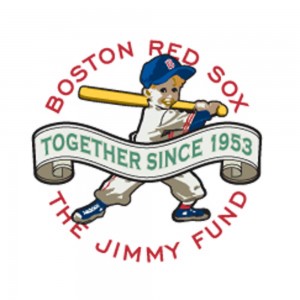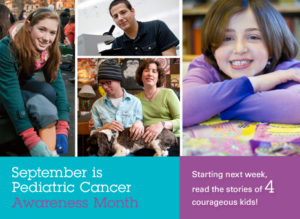
As the baseball world gathers at Citi Field in New York City for tonight’s All-Star Game, here’s a look back at 60 years of all-star partnership between the Boston Red Sox and the Jimmy Fund – which supports cancer research and care at Boston’s Dana-Farber Cancer Institute.
Childhood
What You Should Know about Palliative Care
Palliative care is often misunderstood. People may associate it with end-of-life care or “giving up” – especially when facing a serious health challenge like cancer. But palliative care may not be what you think, and you shouldn’t be afraid to ask for it. Here’s a closer look at what palliative care is – and isn’t.
The Red Sox and the Jimmy Fund: A Winning Team for 60 Years
Like many New Englanders, Fernando Morales can’t wait for Opening Day and the start of the baseball season. And, even if his favorite Boston Red Sox aren’t doing well, this 18-year-old high school senior from Norwood, Mass., says he’ll never waver in his devotion.
He has good reason for his loyalty. As a patient at Dana-Farber Cancer Institute’s Jimmy Fund Clinic since April 2011, Morales has endured chemotherapy, shots, hair loss, and more for treatment of Ewing sarcoma, a tumor of the bone and soft tissue. He’s had to quit playing soccer and running track, but he’s still getting his baseball fix thanks to the relationship between the Red Sox and the Jimmy Fund of Dana-Farber.
Five Ways to Support Families Dealing with Childhood Cancer
When our five-year-old daughter was diagnosed with leukemia (ALL) last summer, our world was turned upside down. Extended hospital stays, twice weekly clinic visits, the side effects of chemo and the constant possibility of unexpected hospital admissions mean stress and exhaustion for all of us — and looming in the background of it all is … Read more
Faces of Childhood Cancer: Steven Clifford
Steven Clifford is an 18-year-old osteosarcoma survivor. A Boston native, he starts college at the University of California, San Diego this month. This is his story.
Life is made up of many difficult decisions. However, imagine my surprise when I had to make a tough and potentially life changing decision at the young age of 11. Up until then, I just was an average child who couldn’t wait to get out of school to play any sport imaginable with his friends.
A Closer Look at Childhood Cancer
September is National Childhood Cancer Awareness Month. Beginning next Wednesday, and over the next four weeks, we’ll introduce four children – Caitlynne, Fernando, Sarah and Steven – who while still young, have already overcome one of the biggest challenges of their lives.
These four represent just a few of the many faces of childhood cancer across the United States and the world. We hope you’ll join us in September in honoring all of the children who come to Dana-Farber/Children’s Hospital Cancer Center, as well as their caregivers—doctors, nurses, psychologists, social workers, researchers, administrators and more—who work tirelessly until every child is well.
 We begin with a conversation with Lisa Diller, MD, chief medical officer and clinical director of Pediatric Oncology at Dana-Farber/Children’s Hospital Cancer Center.
We begin with a conversation with Lisa Diller, MD, chief medical officer and clinical director of Pediatric Oncology at Dana-Farber/Children’s Hospital Cancer Center.
Swollen lymph nodes in children: When to seek care
Although swollen lymph nodes (also known as swollen glands) are usually a sign of an infection or inflammation, they can, very infrequently, be a sign of cancer or a rare disorder.
Rachael Grace, MD, and Christopher Weldon, MD, PhD, co-directors of Dana-Farber/Boston Children’s Cancer and Blood Disorders Center’s Node Assessment Program in Waltham, Mass., offer the following tips for families worried about “lumps and bumps” in their children.
Meet Henry: a cancer survivor who was diagnosed before he was born
Henry Fenollosa’s problems began before he was born, when he was diagnosed with neuroblastoma. His infancy was was spent largely at Dana-Farber’s Jimmy Fund Clinic, where he received treatment for his disease with his family looking on. Today, Henry’s an active seven-year-old, who loves to show off his lacrosse stickhandling abilities and his skill on … Read more
A new approach to old ideas about diffuse intrinsic pontine glioma
Hilary Olson had no reason to suspect that her daughter Hailey might have a brain tumor.
“Her smile was starting to droop a little, and one of her eyes was a little jumpy,” says the 6-year-old’s mother. “We took her to see a neurologist, and he thought she might have pinched a nerve.
“But when he sent us to Boston Children’s Hospital for an MRI,” she continues, “the radiologists sent us straight down to the emergency room.”
Family bonding in the Jimmy Fund Clinic
 By Sara Dickison Taylor
By Sara Dickison Taylor
When our daughter Emily was diagnosed with leukemia at age 5, we found solace and support from other families facing pediatric cancer at Dana-Farber/Boston Children’s Cancer and Blood Disorders Center.
Our visits to Dana-Farber’s Jimmy Fund Clinic became a well-rehearsed play. If it was Friday, it was clinic day. Instead of going to kindergarten or playing with her friends like most 5-year-olds, Emily had her vital signs taken, had blood drawn through her Port-a-Cath, and received a weekly infusion of chemotherapy, platelets, and blood. It was difficult at times, but making friends with other families going through the exact same thing made it bearable.
It takes a village to help you through a child’s cancer treatment, and that includes other families as well as our clinical care team. The Jimmy Fund Clinic usually schedules appointments so that children come in on the same day each week – giving their patients and families a real sense of continuity. We forged relationships with many other “Friday families.” Seeing familiar faces lifted us up and offered a sense of comfort that was just as important for us parents as for the kids. The clinic became a small community for us – our own village.
AT/RT: How my son faced a rare cancer and beat the odds
Medically reviewed by Mark W. Kieran, MD, PhD, Anupama Narla, MD, and Susan N. Chi, MD Most parents treasure the big moments in a child’s life: first steps, first word, first day of school. I, on the other hand, treasure every moment with my son, Declan – the simple act of eating breakfast together, watching … Read more
